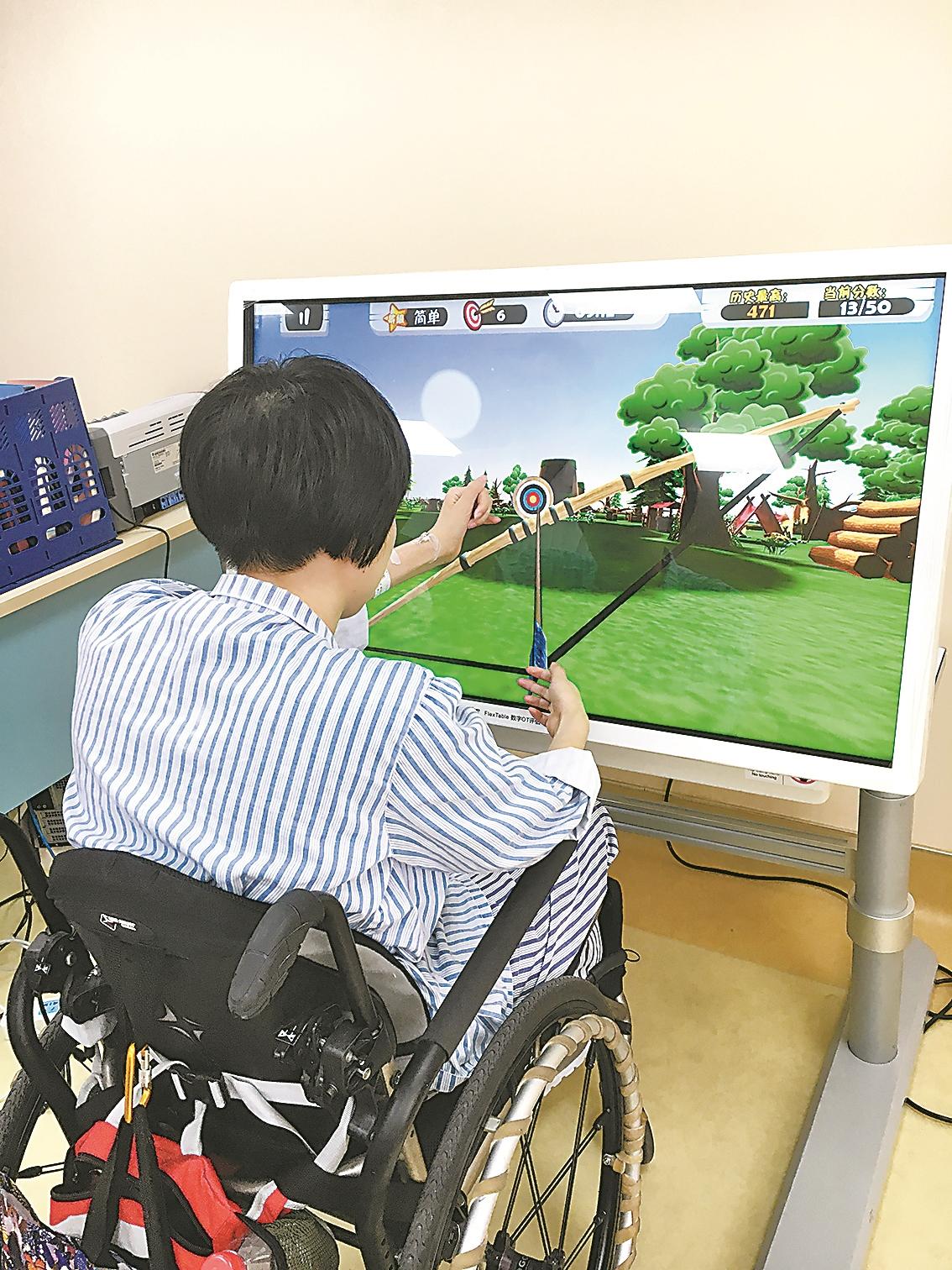
All media reporter of Yangcheng Evening News Zhu Jiale Correspondent Luo Wei Jian Wenyang
Clear headed, but unable to show facial expressions, move or speak, can only be indicated by eye movements... Before Ms. Tang (pseudonym), a patient with locked in syndrome, used the eye movement mouse to make the first sentence, her communication with the world after illness was almost zero.
Ms. Tang, who was once in a state of emotional breakdown, received various forms of support treatment and care from doctors, nurses and family members, and finally had an outlet for her accumulated emotions, and her condition was becoming stable.
On May 19 this year, the 34th National Handicap Day, the reporter went to the Department of Rehabilitation Medicine of the Sixth Affiliated Hospital of Sun Yat sen University (hereinafter referred to as "the Sixth Affiliated Hospital of Sun Yat sen University") to learn more about patients with locked in syndrome.
No one knows the mood, encourage patients to express their feelings
Ms. Tang used to be a stewardess. In January 2019, she suddenly suffered from limb weakness and disturbance of consciousness during sleep. After examination in Zhongshan Sixth Hospital, she was diagnosed with brain stem infarction and basilar artery occlusion, and was diagnosed with atresia syndrome. This is undoubtedly a "bolt from the blue" for Ms. Tang, who is "old at the top and young at the bottom".
Can hear and see, but can't chew, swallow, speak, and move the lower part of the face and limbs. Ms. Tang can only answer questions by opening and closing her eyes and blinking a certain number of times. There are almost static silent exchanges with doctors, nurses, and family again and again.
If there is no intervention of treatment, the mood of patients with locked in syndrome is unknown, so auxiliary communication for patients is particularly important. Later, with the encouragement of the therapist, Ms. Tang began to use the eye movement mouse to write down her thoughts in her mind. Using the concept of Morse code, she output the content by blinking time and frequency, expressing her feelings and releasing her emotions a little more every day.
At first, what Ms. Tang wrote was hopeless. In the company of doctors, nurses and her family day and night, the haze in her heart gradually penetrated into the sun.
"At first, the family worried about whether expressing negative emotions would aggravate the condition, but we still encouraged Ms. Tang. We should adapt to the process of disability adaptation and understand her, have 'unconditional empathy', and stand on the same front with her, so as to better help her out of the predicament." Li Xian, the occupational therapist in charge of the Department of Rehabilitation Medicine of Zhongshan Sixth Hospital, told reporters, Medical staff and family members solve problems together. Through activity design, improved activities, auxiliary equipment, etc., they first achieve the small goal of communicating with the outside world, and then help patients gradually return to their families and life.
Connected with the outside world, scientific and technological progress brings life gospel
"In the face of long-term bedridden patients, we first provide supportive treatment to prevent pneumonia, urinary tract infection, joint contracture and other complications as far as possible, and maintain their health through physical factor treatment, exercise treatment, posture adaptation training, auxiliary standing training, respiratory training, etc." Li Xian introduced.
Wang Yuling, the director and chief physical therapist of the Department of Rehabilitation Medicine of the Sixth Zhongshan Hospital, said that 75% of the locked in syndrome occurred in cerebrovascular diseases, of which the infarction at the base of the pons was the most common (60%), followed by cerebral hemorrhage (10%), and the infarction and hemorrhage at the base of the pons were the most typical. "Although the incidence of the disease is low, it occurs in patients. This' trapped 'state will be a great blow to the quality of life of patients, and will cause a great burden to families and society."
At present, locked in syndrome cannot be completely recovered, but fortunately, there are many technical ways to support treatment. Li Xian introduced that in addition to Morse code and eye controlled mouse, brain computer interface technology can decode the patient's brain activity state or intention; With the help of the environmental control system, patients can realize daily operations such as switching lights and answering phones in the living environment under the eye control state. In addition, the knee joint, ankle joint fixed orthosis and other assistive devices help patients prevent contracture. Through home renovation and configuration of assistive transfer devices, families can better take care of the daily life of patients.
After years of supportive treatment and company, Ms. Tang's condition has been under stable control and she has returned home to continue recuperation.
May 19 is the 34th National Handicap Day, with the theme of "helping the disabled with science and technology, sharing a better life". Looking forward to the future, Wang Yuling said that with the acceleration of scientific and technological progress, especially the in-depth development of the combination of industry, education, research, medicine and industry, the future rehabilitation field will usher in more high-tech AI devices, providing more possibilities for functional compensation and replacement for the disabled.
For example, walking robots can help patients who cannot walk recover their walking ability, and brain computer interface technology can achieve a closer connection between brain and limb functions; Electronic cochlear technology enables hearing impaired patients to hear, and vision impaired patients are expected to see a clearer and broader world with the help of scientific and technological progress.
"It is expected that scientific and technological progress will continue to bring more functional progress and life gospel to the disabled, and improve the quality of life of the disabled," said Wang Yuling.
Editor: Zheng Jianlong

